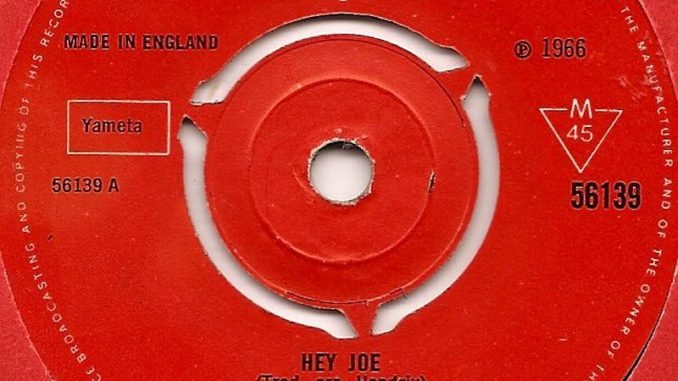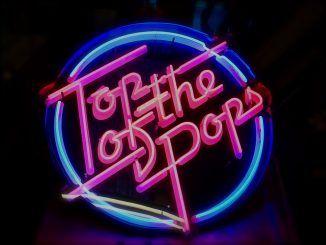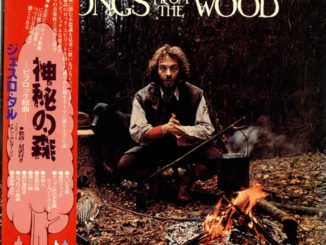
The Jimi Hendrix Experience recorded their first single, ‘Hey Joe’, at De Lane Lea studios in London. Here’s a great Hendrix version recorded live for German TV…..read on to get the real lowdown on this Hendrix classic….
Although written by Billy Roberts the version that inspired Hendrix is most likely this cracking version by LA garage band The Leaves…..
…however, that ain’t the end of the story, the AV Club Website posted this…
In 1962, singer-songwriter Billy Roberts copyrighted “Hey Joe,” a grim-but-catchy folk song derived from various traditional murder-ballads, about a casual conversation between a man and his friend who’d just shot and killed a woman. The lyrics fit into a simple framework, with lots of room for improvisation and addition, but in their most basic form, they’re a lot like this:
Hey Joe, where you goin’ with that money in your hand?
Hey Joe, where you goin’ with that money in your hand?
Chasin’ my woman, she run off with another man.
Hey Joe, I heard you shot you woman dead.
Hey Joe, I heard you shot your woman dead.
Yes I did, I got both of them lying in that bed.
Roberts played the song first on the Greenwich Village hootenanny scene, and then in San Francisco after he moved out west. But before he had a chance to record and release his own version, Roberts learned that his old New York pal Chet Powers—by then renamed “Dino Valenti”—had been auditioning it around Los Angeles for bands in the fledgling folk-rock scene, claiming it as his own. Around the same time, another Greenwich refugee, Tim Rose, starting performing “Hey Joe” and saying that it was a standard he’d learned as a boy, given his own new arrangement. To this day, the actual origin and authorship of “Hey Joe” is unclear (though Roberts has the strongest claim, and generally gets the credit).
What is clear is that the song arrived in popular culture at just the right time, and resonated with a generation of young musicians enamored of old Americana and romantic gloom. In the mid-to-late 1960s, “Hey Joe” became a set-list staple in rock clubs, coffeehouses, and garages, and was so identified with the music and the mood of the era that the cover versions in subsequent decades—and there have been many—have at times seemed like an effort either to co-opt or subvert the original’s 1960s cachet.
The initial wave of “Hey Joe” popularity is largely attributable to three Los Angeles-based groups, who all recorded similarly uptempo versions around the same time. The Leaves were the first in 1965, though they were unhappy with the sound of their first attempt, and tried twice more to get it right, finally releasing their definitive take in 1966 after Love and The Byrds had recorded their own. (David Crosby had reportedly been encouraging his Byrd-mates to do “Hey Joe” since 1964, and finally won them over after they heard what The Leaves and Love had done.) The garage-rockers recording “Hey Joe” over the next couple of years—including The Music Machine, The Shadows Of Knight, and the early Chicano-rock act Los Locos—were largely feeding off the energy that generated by The Leaves, Love, and The Byrds. Following this model, the song races along like a fugitive, accompanied by slashing guitar noise and breathy vocals. It sounds exciting, crude, and appealing archaic. It’s no wonder then that by the end of 1966, “Hey Joe” joined “I Know You Rider” as a de facto part of any halfway respectable shaggy-haired band’s repertoire.
You can read the rest here
If you’re looking for Hendrix vinyl, CDs, memorabilia and more, visit the Jimi Hendrix Collectors Store at eil.com
To finish things off here’s the Billy Roberts version from 1962, which is pretty damn good too….




Be the first to comment